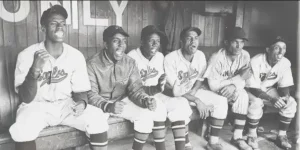
J.R.R. Tolkien’s Middle-earth mythology includes several epic and powerful love stories. Aragorn and Arwen are probably the best known thanks to the Lord of the Rings films, plus Sam and Rosie get married at the end, and the extended editions also feature Éowyn and Faramir’s relationship, though that one was a bit rushed even in the books. But book fans also know the stories of Tuor and Idril, Elwing and Eärendil, and the rather more tragic story of Aegnor and Andreth, among others.
The love story that meant the most to Tolkien himself, though, was the story of Beren and Lúthien, which was directly inspired by the writer’s own life.
The story of Beren and Lúthien is one of very few stories about the First and Second Ages of Middle-earth told, in a brief and summarized form, in The Lord of the Rings itself. Fuller versions can be found in various of Tolkien’s posthumously published works, mainly in a chapter of The Silmarillion and in a volume dedicated entirely to them, Beren and Lúthien, as well as shorter sections in The Book of Lost Tales.
Beren was a mortal Man from a royal house in Beleriand, an area to the west of Middle-earth in the First Age, much of which is under the sea by the time of The Lord of the Rings in the Third Age. For various reasons he ended up living as an exile and an outlaw, and came to the area of Beleriand called Doriath, which was ruled over by Sindarian Elf King Thingol.
In Doriath, Beren came across the king’s daughter Lúthien dancing in a woodland glade and fell madly in love with her, giving her the nickname Tinúviel, meaning Nightingale. But her father Thingol did not want them to marry because Beren was mortal, so, presumably to avoid constant pestering from his daughter, he set Beren what he thought was an impossible task and said Beren could marry his daughter only if he accomplished it.
The Dark Lord Morgoth, Sauron’s predecessor and superior and one of the Ainur (immortal angelic beings) – so, basically, Tolkien’s version of Satan – was at the time holed up in his fortress of Angband, in northern Middle-earth. He had stolen the three Silmarils, beautiful jewels made by the Elf Fëanor that contained the Light of the now-destroyed Two Trees of Valinor (the light of Creation, essentially). Morgoth now wore the Silmarils in his Iron Crown, so Thingol told Beren, “Bring to me in your hand a Silmaril from Morgoth’s crown; and then, if she will, Lúthien may set her hand in yours.”
Undeterred, Beren set off to do as he was asked, and when his friend and companion Finrod was killed in the process, Lúthien came along to join him on the quest herself. Many misadventures later, they managed to get hold of a Silmaril, though both the jewel and Beren’s hand were bitten off and swallowed by a giant wolf and he and Lúthien had to be rescued by giant Eagles (a favorite story beat of Tolkien’s). However, on their return to Thingol, they pointed out that Beren did indeed have one of the Silmarils in his hand, even if the hand in question was no longer on his person, and they were allowed to get married. They had a son, Dior, and lived together for some time, until the giant wolf turned up again and Beren and Thingol went off to hunt it. They killed the wolf and recovered the Silmaril, but Beren was mortally wounded in the process, and after he died, Lúthien died of grief as well. They came back to life, thanks to the sympathy of Mandos, the keeper of the Houses of the Dead, but eventually both died a mortal death.
Aragorn describes Beren and Lúthien’s story as “sad” in The Fellowship of the Ring, though as Middle-earth stories go, it’s actually quite cheerful. Tolkien’s own love story, thankfully, was even happier, though it was not short of drama, and it directly inspired his fictional creations.
Tolkien’s father died when he was four years old, and his mother died when he was 12. Ronald (he was known by his second name) and his younger brother Hilary became wards of a close friend of his mother’s, Father Morgan, a Catholic priest at The Oratory in Birmingham. By the time Tolkien was 16, he and his brother were living in a boarding house run by a parishioner of the Oratory named Mrs. Faulkner, under the legal guardianship of Father Morgan.
It was here, in 1908, that Tolkien first met pianist Edith Bratt. Edith had been raised by her single mother Frances, who had died when she was 14. Now 19, Edith had finished school and was under the legal guardianship of a solicitor called Stephen Gateley. She was lodging at Mrs. Faulkner’s while working out how to continue her career as a pianist or piano teacher.
Tolkien and Edith became very close and by the summer of 1909 they had fallen in love. However, when Father Morgan found out in the autumn, he was not best pleased. He thought Edith was a distraction from Tolkien’s schoolwork, and he was not keen on the idea of his Roman Catholic charge being involved with an older (illegitimate) Anglican girl. In January 1910, Father Morgan forbade Tolkien to have any contact with Edith at all while under his guardianship. Tolkien reluctantly obeyed, telling his son Michael in a letter years later that “it was extremely hard, painful and bitter.” He did not communicate with Edith at all from that point until he turned 21 and became a legal adult in 1913.
It is clear to see the influence of Tolkien’s own life on the story of Beren and Lúthien here, as Lúthien’s father Thingol forbids their relationship just as Tolkien’s father figure Father Morgan had forbidden his. Perhaps Tolkien saw the impossible task given to Beren as an echo of the impossible-feeling task he was given, to stop all communication for three years knowing Edith might marry someone else in that time (he told Michael she was certainly free to do so).
By 1913, Edith was 24 years old and worrying that she was going to be left on the shelf, so she got engaged to the brother of a friend from school, a farmer from Warwickshire called George Field. On the evening of his 21st birthday, 3rd January 1913, Tolkien wrote to her declaring his love, prompting her to break off that engagement, and on 8th January he went to see her and the two of them got engaged. Edith became a Roman Catholic in January 1914 (as a result of which she was kicked out of her lodging with a friend of her guardian) and they got married on 22nd March 1916, with the reluctant blessing of Father Morgan (who could now not stop them anyway, as both were legal adults).
Their marriage was not the end of their romantic trials, though, because by 1916 Britain was in the middle of World War I. Tolkien had already been in the army for a year following his graduation from university, feeling a lot of social pressure to join up despite being in his own words to Michael, “a young man with too much imagination and little physical courage.” A month or two after the wedding, he was sent to France.
Tolkien ended up serving in one of the most notoriously bloody battles of the First World War, the Battle of the Somme, which he described simply to Michael as “carnage.” He worked as a Signals Officer on the front lines throughout the worst months of the Somme offensive, until in October 1916 he contracted “trench fever,” a louse-borne disease that also ended the military service of his fellow Signals operator on the Somme, Winnie-the-Pooh writer A. A. Milne, as well as Tolkien’s later friend, C. S. Lewis. Trench fever could have prolonged and debilitating effects, including muscle pain, fatigue, and heart problems; it’s not hard to see where Tolkien got the idea for Frodo’s lingering pain as a result of old injuries. Tolkien returned to England and stayed with the army until the summer of 1919, but was considered unfit for active service abroad as he suffered from repeated bouts of illness as a result of the trench fever.
In spring 1917, Tolkien was stationed at the Humber Garrison near Roos in Yorkshire, and he and Edith were able to live together for a while, and this was where Beren and Lúthien’s story started. At the very end of his life, Tolkien wrote in a letter to his son Christopher that he first thought of the story while watching Edith (who was presumably already pregnant with their eldest son John at the time, as he was born less than nine months later) in “a small woodland glade filled with hemlocks.” He told Christopher that “in those days her hair was raven, her skin clear, her eyes brighter than you have seen them, and she could sing – and dance.”
Inspired by that day, Tolkien wrote the first version of the story of Beren and Lúthien while in hospital in 1917, and he continued to come back to it at various times over the years. He worked on it a lot during the 1920s, incorporated it into The Lord of the Rings, and devoted a chapter of The Silmarillion, which he tried repeatedly to get published in his lifetime but which was eventually edited by Christopher and published after his death, to their story.
Beren and Lúthien’s tale echoes through all the other romances of Middle-earth, especially the several mortal/Elf pairings and most especially their direct descendants, Aragorn and Arwen (yes, Aragorn and Arwen are related, though very distantly). Aragorn and Arwen’s first meeting is directly modeled after Beren and Lúthien’s; as told in the Appendices to The Lord of the Rings, Aragorn was singing a lay about the meeting of Beren and Lúthien when he first saw Arwen, and mistook her for Lúthien herself. It is quite noticeable that every mortal/Elf pairing Tolkien wrote featured a male mortal and a female Elf, Tolkien placing his wife and all the characters she inspired on quite the pedestal. It wasn’t until the writers of The Rings of Power created a male Elf and female mortal romantic relationship that Middle-earth saw this pairing the other way around.
In The Fellowship of the Ring itself, the scene in the woodland glade is recreated through verses in a song chanted to the hobbits by Aragorn:
The leaves were long, the grass was green,
The hemlock-umbels tall and fair,
And in the glade a light was seen
Of stars in shadow shimmering.
Tinúviel was dancing there
To music of a pipe unseen,
And light of stars was in her hair,
And in her raiment glimmering.
Aragorn’s choice of this song is a little clue about his true identity. During the early chapters of The Fellowship of the Ring, our four hobbit heroes Frodo, Sam, Merry, and Pippin are forced to flee the village of Bree with only a single pony and a mysterious Ranger called Strider. Sam asks Strider to tell them a tale of Elves in the olden days, to pass the time and brighten up the night, so Strider chants this Elvish song about the meeting of Beren and Lúthien. The scene allowed Tolkien to include this very personal scene in his best known work, but it is also a little clue to who the mysterious Strider really is – their direct descendant.
The letter to Christopher in which Tolkien talked about the woodland glade was written after Edith’s death and only a few months before Tolkien’s own. He told his son that Edith was his Lúthien and that she knew it, and that although he probably would not write an official biography, he would like Christopher and his loved ones to know about his and Edith’s story – “the dreadful sufferings of our childhoods, from which we rescued one another… the sufferings we endured after our love began… these never touched our depths nor dimmed our memories of our youthful love.”
Tolkien and Edith are buried together in Wolvercote Cemetery in Oxford, and their grave bears two small inscriptions below their names – Lúthien under Edith’s name and Beren under J.R.R.’s himself.
The post Tolkien’s Real-Life Love Story Inspired One of Middle-earth’s Most Famous Tales appeared first on Den of Geek.





